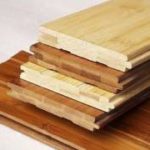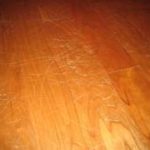What is the best attic insulation for your place? Find out how to make a properly insulated space resorting to blanket or loose-fill insulation technology.
Whether you’ve decided to make a warm roof area or just insulate the home space from above leaving the attic cold, the point concerning what is the best attic insulation is probably a challenge for you. A cold roof is insulated at joist level in order to stop heat loss via the cold roof space. To make a roof warm, the insulation is mounted between the rafters and joists.
Blanket insulation
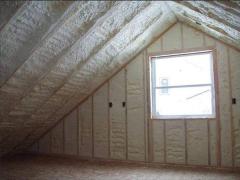 Modern technology of blanket insulation today is considered the best insulation for attic. Among commonly used types of insulation there are mineral wool or fiberglass rolls and batts, rigid fiberglass board, loose fill materials (cellulose, mineral wool etc).
Modern technology of blanket insulation today is considered the best insulation for attic. Among commonly used types of insulation there are mineral wool or fiberglass rolls and batts, rigid fiberglass board, loose fill materials (cellulose, mineral wool etc).
Rolls and batts are produced of mineral wool and fiberglass. They are supplied in standard size to properly fit spacing between the joists. This kind of insulation material is waterproof and fire resistant. It can be either equipped with vapor barrier or not.
Rigid fiberglass batts are of greater insulation value than ordinary fiberglass.
Loose fill can be either blown by a special machine or poured from the pack right onto the attic surface. Blowing is much faster and provides better coverage. Loose fill is a better option comparing to batts and rolls for attics which have uneven joist spacing or other obstructions.
Preparations for the job
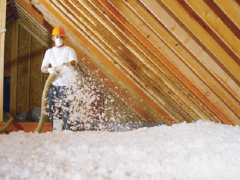 Before starting, perform accurate measurements of your attic surface, and keep in mind the required depth of the material.
Before starting, perform accurate measurements of your attic surface, and keep in mind the required depth of the material.- Clean the surface between the joists. Decide whether you need a vapor barrier. It is advisable to apply an extra membrane when the drywall surface isn’t silver-backed.
- Vapor barrier is rolled out and neatly cut to fit the gaps between joists.
- Fasten the barrier to the joists by a staple gun.
- Unpack and roll the insulation blanket out, don’t compress it.
- To prevent overheating of the electrical fittings, cut an opening in the insulation to allow for necessary hardware.
- Get the wires above the insulation not to let them overheat.
Mounting the storage decking
 To insulate the junctions of the rafters and joists in the attic, cut strips of blanket. When using airtight felt, leave slight gaps behind the wedges.
To insulate the junctions of the rafters and joists in the attic, cut strips of blanket. When using airtight felt, leave slight gaps behind the wedges.
Put the first sheet across the adjacent joists. The edge of the sheet is butted up against the trusses. Don’t close the gaps behind the strips of insulation.
To fasten the deck, use one screw for each section related to the joists on the bottom. Board ends are joined on joists. Then glue the edges with adhesive and fit the wooden sheets together by means of tongue-and-groove joint system.
Installing the loose-fill insulation
Methods involving loose-fill insulation are regarded as a fine alternative for blanket insulation. Which is the best attic insulation for your home is up to you. Consider that packs of loose-fill material are simple to handle and carry into the attic comparing to the blanket insulation. In case of awkwardly shaped attic with much blocking and hard-to-reach voids, loose-fill insulation provides much easier alternative to blanket insulation.
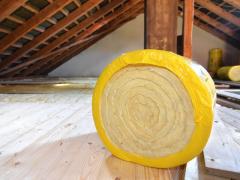 First, clear the voids. To prevent the insulation from leaking outside, put a barrier made of a small piece of blanket insulation at each junction between joists and rafters.
First, clear the voids. To prevent the insulation from leaking outside, put a barrier made of a small piece of blanket insulation at each junction between joists and rafters.
Carefully apply the insulation onto the spots between the joists. Cut out a piece of plywood to fit the spacing between the joists. Align the fill, using the offcut. Excess insulation is moved to areas which need to be handled.
When leveled off, there should be a flat coating across the whole attic space. The blanket insulation barrier at the eaves is going to prevent “slipping”.
The depth of material is determined by further requirements and regulations. Besiege any electrical hardware with a wooden frame to keep the insulation out.
Insulate Walls and Rafters
If you want to turn the attic into a living area, you have to install a certain quantity of insulation. Rafters’ depth is a challenge – it is often necessary to increase it by adding wooden bars. The drywall is covered with extra insulation; framefoil varieties are stapled across the trusses prior to applying drywall. Here you ought to make an air gap by battening the framefoil.
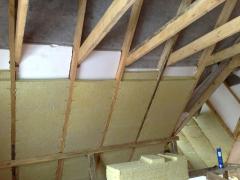 A dwarf wall on the attic serves as a partition from the eaves. Thus, you’ve got a practical space for furniture and fittings. The space behind the wall remains cold with the insulation at joist level only to stop heat losses from the below floor.
A dwarf wall on the attic serves as a partition from the eaves. Thus, you’ve got a practical space for furniture and fittings. The space behind the wall remains cold with the insulation at joist level only to stop heat losses from the below floor.
Fasten lengths of lumber along the inner side of each rafter. Once airtight felt is installed, these lathing strips will preserve the ventilation gap. If required, you can deepen the fill space by screwing 2×2 in wooden battens to the roof rafters.
Lay the blanket between the lathing strips; do not press the insulation to the roof underside. Wedge the joints between the studs and the dwarf wall with insulation, providing a tight fit to ensure that the material doesn’t go backward. To prevent this, tap the nails along the hind of the studs. You may opt to rigid insulation boards instead.
Apply a vapor barrier. Next, the sheets are fastened to the joists. Thermal drywall is fixed to the wall. Totter joins between adjacent boards to make sure you reached for solid structure. Screw the wooden sheets to the trusses.
Related Information:
The best insulating materials for the roof.

